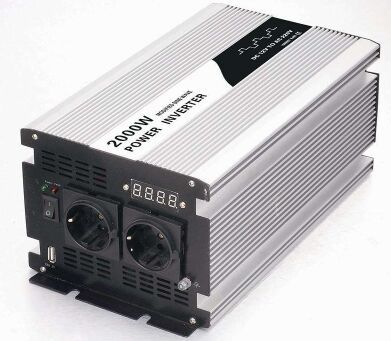The output power of a photovoltaic system is generally difficult to reach the nominal power of the module. This is because the power of the module is tested under very good weather conditions and the temperature of the module is relatively low. Normal weather cannot reach this condition. Not all modules can accept solar energy because they are not always at the best angle.

Photovoltaic systems have losses: dust, shadows, shadows, etc. on components, line losses such as cables, switches, and connectors; losses of equipment such as inverters, transformers, and power distribution cabinets. Generally, for large-scale power stations, the maximum system output power may only be about 85%-90% of the rated power of the components; for small distributed power stations, the maximum system output power may only be about 90%-95% of the rated power of the components.
Solar irradiance factor: only under standard test conditions (irradiance is 1000W/m2, battery temperature 25℃), the output power of photovoltaic modules is "nominal power" (340W), when irradiance and temperature change, The power will also change. Under non-standard conditions, the output power of photovoltaic modules is generally not the nominal power.
System loss factors: The main considerations for system efficiency are: efficiency reduction caused by dust and shadow shielding on the components, power reduction caused by component temperature, impedance matching loss caused by DC cables, and mismatch between component series voltage and inverter voltage Reduced efficiency, MPPT tracking loss of the inverter, power loss of the inverter itself, AC cable power loss, transformer power loss and many other factors.
System loss is the loss of comprehensive power generation, and the value changes according to conditions. The factors that affect the maximum power output are components and DC cables. In order to increase the output power, various losses must be minimized. After the photovoltaic installation location is determined, it is difficult to change factors such as the installation angle of the module, the temperature of the module, the loss of the inverter itself, and the MPPT tracking efficiency. However, factors such as DC cable loss, DC cable impedance matching, component and inverter voltage matching, etc. are controllable.
Minimize the length of the DC cable. From the component to the inverter, the DC cable is used. The length of this cable has a great influence on the power generation of the system. On the one hand, it is the loss of the DC cable itself, on the other hand, it is impedance matching. The inverter should be as close as possible to the components, the DC cables should be controlled within 20 meters, and the DC cables of each MPPT should be as consistent as possible.
After the components are connected in series, the working voltage is as close as possible to the rated voltage of the inverter to reduce the loss of the inverter.